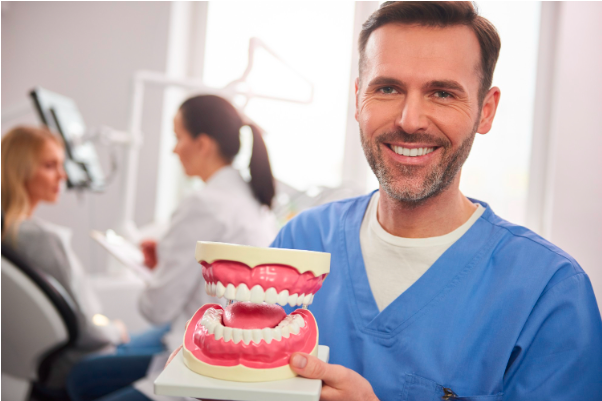Dentistry has advanced in remarkable ways over the years. Patients now hear about flexible dentures, metal frameworks, and even implant-supported prosthetics. With so many new options, some may wonder why dentists continue to recommend acrylic dentures. The answer lies not only in tradition but also in the proven medical, functional, and clinical benefits of this material.
Proven Safety Record
Dentists prioritize safety when suggesting treatments, and acrylic dentures have been used for decades with reliable outcomes. Their material, known as polymethyl methacrylate (PMMA), has been studied extensively and found to be well tolerated by the majority of patients. Unlike some metals that can trigger allergic reactions, acrylic is generally biocompatible, which makes it a safe choice for a wide range of people.
Revived Smiles highlights how acrylic bases provide both durability and a gum-colored appearance, combining medical reliability with an aesthetic finish. This balance between function and appearance is one of the reasons why dental professionals often trust acrylic for partial and complete dentures.
Adaptability to Oral Conditions
Every patient’s mouth is unique. Gums may shift over time, bone levels change, and natural teeth that remain in the mouth may require different levels of support. Acrylic is easy to shape, reline, or adjust, making it a versatile material for dentists to work with.
- Relining capability: Dentists can adjust the base if the fit changes, reducing the need for a complete replacement.
- Ease of reshaping: Acrylic allows for modifications in the clinic, making it adaptable to new oral conditions.
- Multiple uses: It works for full dentures, partial dentures, and even immediate dentures given right after tooth extraction.
This adaptability helps patients avoid discomfort and ensures that their dentures continue to function well as their mouths change over time.
Strong Support for Chewing Function
Chewing is one of the most important functions dentures must restore. Acrylic dentures, when properly fitted, provide a stable base that allows patients to eat a wide range of foods. While they may not offer the same bite force as dental implants, they are more than capable of supporting everyday meals.
The balance they provide across the gums reduces strain on any single area, helping to protect oral tissues from damage. Patients can enjoy meals with less worry about discomfort or instability, which contributes directly to overall health and nutrition.
Oral Health Considerations
Wearing dentures affects oral tissues, and dentists must weigh these factors carefully. Acrylic dentures distribute chewing forces across a larger area, lowering the risk of pressure sores compared with some smaller or rigid alternatives.
In addition, acrylic surfaces are relatively easy to keep clean. Proper hygiene reduces the risk of fungal growth, such as oral thrush, and minimizes plaque buildup. Patients are usually instructed to remove dentures at night, rinse after meals, and brush gently with a soft brush. These simple routines support long-term gum health.
Clinical Reliability Across Age Groups
Dentists also consider patient age when recommending treatments. Acrylic dentures remain a trusted option for both younger patients who need partial replacements and older adults requiring full dentures.
- For younger adults: They provide a cost-effective and medically reliable solution while patients consider longer-term options like implants.
- For older patients: Acrylic is lightweight, adjustable, and familiar, making it easier to adapt to over time.
- For patients with health conditions: Because they are non-invasive, acrylic dentures are often safer for people who cannot undergo surgery.
This flexibility across different patient needs reinforces why dentists continue to view them as dependable.
Conclusion
Even with the rise of advanced dental materials, acrylic dentures remain a cornerstone in restorative dentistry. Their long history of safe use, adaptability to changing oral conditions, strong chewing support, and reliability across age groups make them a practical choice for many patients. While new materials and methods continue to develop, dentists value acrylic because it balances proven clinical effectiveness with patient comfort. For many, this combination ensures a healthier smile and a functional bite that lasts for years.







